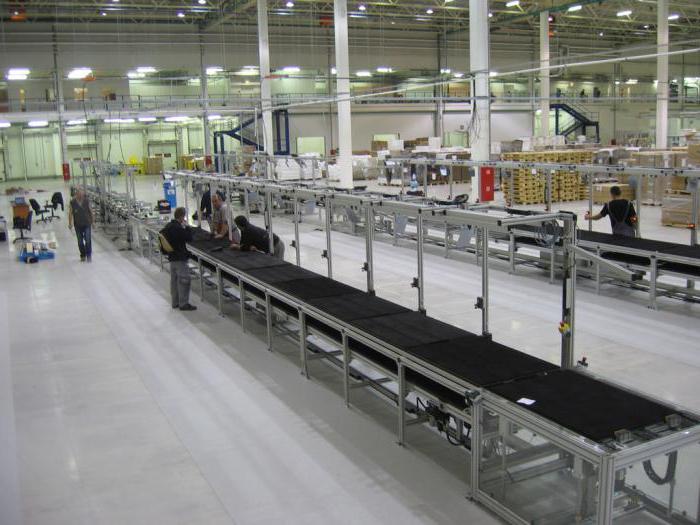All citizens who are employed and perform work receive a salary. But in each industry, in each company or enterprise, salaries can vary significantly. Time wage is just one of the forms of remuneration of employees.
What is time wage?

Time wage is a form of remuneration in which the amount of time spent on the work is paid, taking into account the qualifications of the employee and working conditions. That is, in fact, this is a non-standard form of payment, which is used in cases where the work performed by an employee is not subject to standard standardization and accounting.
This form of payment was invented in order to support universal discipline during the labor process and to build career growth for those workers who have good qualified skills.
Where is this type of salary used?

The time-based form of wages is most often used:
- in production, where there are conveyor lines with an ordered rhythm of work;
- when performing work related to the setup and commissioning of equipment;
- in organizations where the main result of the work performed is a high-quality end product;
- when performing a large number of works, where the normalization will be inappropriate;
- in the performance of tasks when it is possible to determine the final product, but it is impractical to consider it the main indicator of work.
With a time-based wage system, wages are accrued only for the time that the employee spent on the task. That is, it is used only in the above cases, when the use of other forms of remuneration is impossible. To apply the time-based form in other cases is impractical.
Legal framework for time-based form of payment
As you know, a salary consists of a salary, an additional amount for seniority and rank, as well as bonuses. In Art. 133 of the Labor Code of the Russian Federation (hereinafter referred to as the Labor Code of the Russian Federation) states that each employee who was able to fulfill the monthly rate in time and which performed the necessary amount of work, is obliged to receive a salary of at least the minimum wage and the subsistence level provided for in this country. This condition applies throughout the country, regardless of region and city.
But, in addition to this, time wages are also regulated by the following regulatory documents:
- collective labor agreement;
- a contract concluded with a trade union;
- other acts and documents in force at a particular enterprise or organization.
Advantages and disadvantages of the time-based form of remuneration

Time wage has both a number of advantages and disadvantages. Among the main advantages are:
- Savings in the total capital of enterprises and organizations due to the fact that employees receive money exclusively for hours worked (downtime is not paid);
- increased productivity due to the desire of employees to carry out large volumes of work (the more tasks are completed, the more the employee will receive money);
- reduction of costs for training due to the employment of qualified employees;
- receiving stable high earnings with the possibility of career growth.
The disadvantages of such a payment system include:
- controlling the volume of products that are produced;
- in some cases, an underestimated amount of payment in comparison with the piecework system;
- stability of the work rate even with an increase in working capacity;
- dependence of salary on the volume of output.
Types of time wage forms
It is worth noting that somewhere in the enterprise it will not work to meet time wages in a “pure” form, since many employers use only its varieties. According to the Labor Code of the Russian Federation, the following types of time wages exist in the state:
- time-based simple;
- time-bonus;
- time-based with a normative task;
- other types (in particular, piecework and salary).
In order to distinguish one type from another, to understand how this or that salary is calculated, it is necessary to study each of them separately.
Time-based simple ZP

This type is not based on the calculation of the amount of work, but the amount of time spent on work. That is, the amount of work in this case does not matter when calculating salaries. Based on this, a simple time-based salary for convenience can be divided into daily and hourly.
Calculating it is quite simple using the formula:
Zpr pov. = Tst. x tR., rub. (excluding taxes), where:
- TST - tariff rate (hourly or daily);
- tR. - time spent on work (in days or hours, depending on the type of rate).
For example, if you take an hourly tariff rate of 150 rubles. and the amount of time spent on work - 20 days (8 hours daily), it will turn out:
Zpr. pov. = 150 x 8 x 20 = 24 000 rub. (excluding taxes).
Salary is also calculated at the daily rate. For example, the employee’s daily rate is 900 rubles, and he worked 20 days a month, then the salary will be:
Zpr. pov. = 900 x 20 = 18,000 rubles. (excluding taxes).
The disadvantages of this form of payment are obvious:
- low quality of finished products;
- motivation to perform a large amount of work, despite the loss of quality.
Time-bonus premium

Time-bonus salary - a payment system in which the salary is calculated based not only on the amount of time spent on work, but also on the volume and quality of the final product. In other words, this RFP consists of the size of the salary, as well as the volume and quality factors of the finished product.
The advantages of this system:
- payroll calculation is quite simple;
- during the calculation, you can determine how well the employee copes with the tasks;
- the employee has the motivation to improve his skills, since when calculating the salary, not only the amount of working time or the volume of finished products, but also its quality, is taken into account.
The disadvantages of this system are fewer, but they are. One of the main disadvantages is that the decision to assess the quality and quantity of products remains with the authorities. In other words, there is a chance that the assessment will be biased and the employee will not agree with it.
Calculate time-bonus salary can be using the following formula:
Sn-p. = ∑o. + ∑п. x toP, rub. (excluding taxes), where:
- ∑o. - salary amount;
- ∑p. - the number of products sold;
- toP - premium ratio.
For example, salary merchandiser is 9,000 rubles. In addition, the employee was able to sell products over the norm by 75,000 rubles per month. It is known that the employee bonus ratio in this case will be 5%. Then we have:
Sn-p. = 9,000 + 75,000 x 0.05 = 12,750 rubles.
Piecework

This payment system is often called mixed. She's great:
- organizations involved in trade;
- enterprises with shift work, as it allows you to charge additional money for overfulfilment of norms and overtime at night.
The calculation of time wages of piecework form can be made based on the following example. Suppose a machine operator makes cylinders for cars. For each product he receives 250 rubles. The daily rate of finished cylinders is 5 pcs. For every cylinder made above the norm, the machine operator receives another 300 rubles. For a month (20 working days), the worker manufactured a total of 110 cylinders.And the average daily salary of a machinist is 800 rubles.
The formula for determining the hourly piecework salary:
Ss. = (∑п.-1 x ∑н. + ∑п.n. x ∑пSaint-1) x ∑р.d. + ∑d.o., rub., where:
- ∑п.-1 — the cost of 1 pc. products;
- ∑н. - daily rate for the manufacture of products;
- ∑п.n. - amount of overfulfillment of the norm;
- ∑пSt.-1 - the cost of 1 pc. excess products;
- ∑р.d. - number of working days;
- ∑d.about. - the amount of daily salary.
To calculate the final salary, you need to know the average daily output:
∑d.at. = 110/20 = 5.5 cylinders.
That is, the norm was exceeded by 0.5 cylinder. Then piecework salary will be:
Ss. = (250 x 5 + 0.5 x 300) x 20 + 800 = 28 800 rubles. (excluding taxes).
Time wage

This form of payment is always fixed. To receive a full salary, the employee is required to comply with the norm daily. In case of overfulfillment, the employee will receive the same money as usual. This is the main drawback of this form of payment, since it will not have the motivation to make more products than required.
Time wages of the salary form can change up or down only at the time of receipt sick or vacation time.
The pluses for the employer and the department at the enterprise that deals with payroll is that it does not have to be calculated. The fact is that the salary specified in the contract is the same wage. I.e:
Sn.about. = ∑o., rub., where:
- Sn.about. - time wage;
- ∑o. - salary amount.
As mentioned earlier, its amount will change only if you get sick leave, leave, or in those rare cases when the employee does not comply with the norm within a month. Suppose a monthly salary of a programmer under a contract is 45,000 rubles, and the number of working days is 20, of which the employee was on sick leave for one week (5 days). At the same time, to pay for a hospital employee’s earnings is 2,500 rubles. in a day. Then the salary will be calculated by the formula:
Sn.about. = ∑o. / ∑р.d. x ∑f. + ∑d.z. x∑н.d., rub., where:
- ∑o. - salary amount;
- ∑р.d. - the number of working days in a month;
- ∑f. - the number of actually worked days;
- ∑d.z. - the amount of daily earnings;
- ∑н.d. - the number of days off (sick leave / vacation).
We have: Зп.about. = 45,000 / 20 x 15 + 2,500 x 5 = 46,250 rubles. (excluding taxes).
Timed with normalized task
This time wage system is used in enterprises and organizations where the employee is invited to fulfill a clearly defined work plan. For fulfilling the norm, the employee is also entitled to an additional payment to the principal amount. It is charged in percentage ratio to the time part of the salary. Such surcharge depends on the level and quality of work performed.